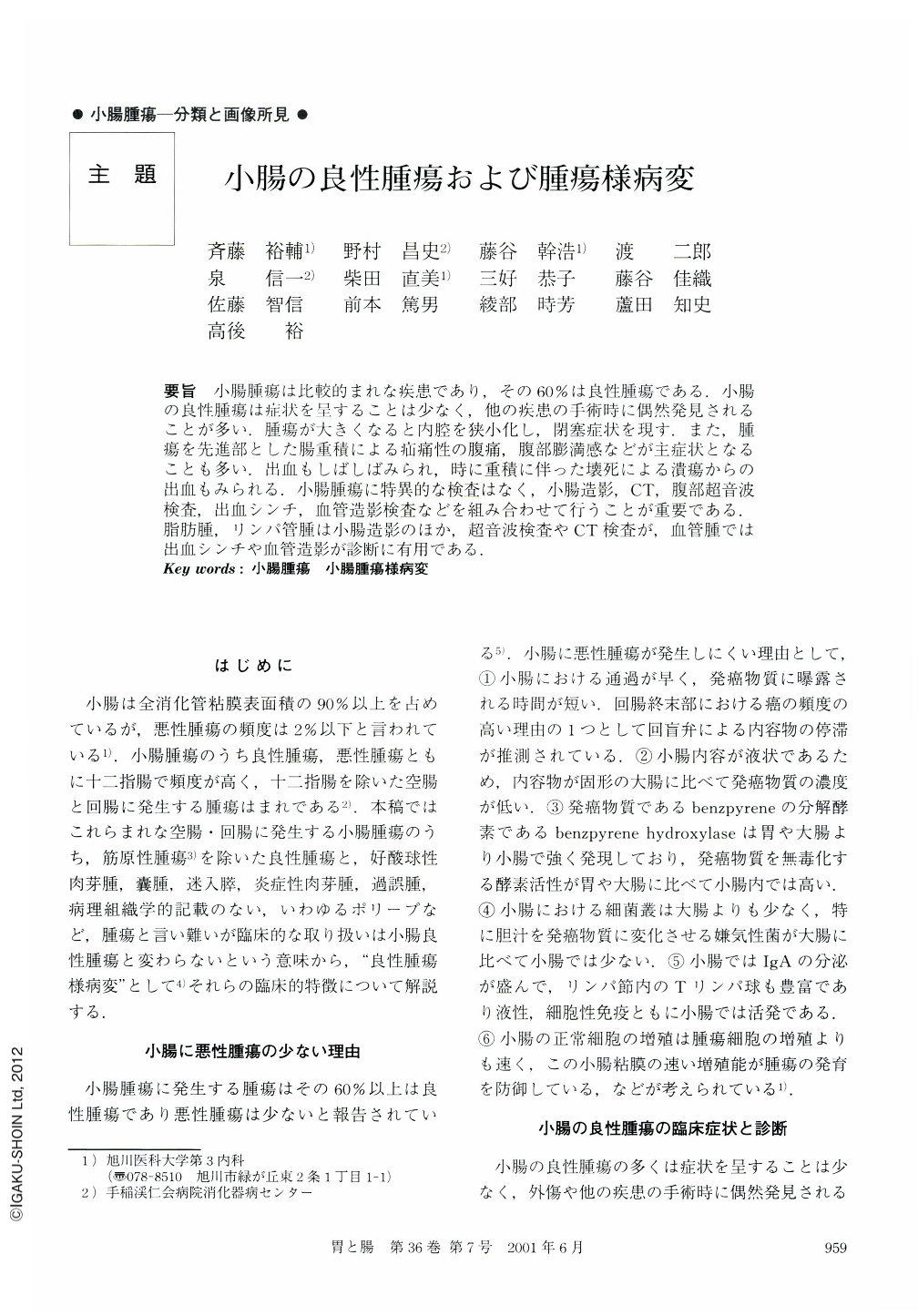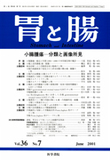Japanese
English
- 有料閲覧
- Abstract 文献概要
- 1ページ目 Look Inside
- サイト内被引用 Cited by
要旨 小腸腫瘍は比較的まれな疾患であり,その60%は良性腫瘍である.小腸の良性腫瘍は症状を呈することは少なく,他の疾患の手術時に偶然発見されることが多い.腫瘍が大きくなると内腔を狭小化し,閉塞症状を現す.また,腫瘍を先進部とした腸重積による疝痛性の腹痛,腹部膨満感などが主症状となることも多い.出血もしばしばみられ,時に重積に伴った壊死による潰瘍からの出血もみられる.小腸腫瘍に特異的な検査はなく,小腸造影,CT,腹部超音波検査,出血シンチ,血管造影検査などを組み合わせて行うことが重要である.脂肪腫,リンパ管腫は小腸造影のほか,超音波検査やCT検査が,血管腫では出血シンチや血管造影が診断に有用である.
Benign tumors and tumor-like lesions of the jejunum and the ileum are rarely detected and the diagnosis is sometimes difficult. Most benign tumors of the jejunum and the ileum present no symptom until they grow to around 4 cm in size. Those with 4 cm or more in size often present obstructive symptoms such as intermittent colicky abdominal pain, nausea, vomiting, and abdominal fullness caused by intussusception. Occult or sometimes massive bleeding is presented because of ulceration caused by necrosis due to intussusception. There is no specific imaging test helpful to detect small-bowel tumors. Cautious small-bowel enteroclysis (SBE) is the most useful means for detecting small sized subclinical small-bowel tumors. Filling defect and, sometimes, in-tussusception can be imaged by SBE. Computed tomography and ultrasonography are useful especially for the detection of lipomas, lymphangiomas, myogenic and neurogenic tumors. Scintigraphy and angiography is useful for the detection of hemangiomas. Of the small-bowel benign tumors and tumor-like lesions, lipo-ma, hemangioma, lymphangioma and neurogenic tumors are commonly detected and the characteristics of those tumors are described in this paper. If the patient complains of unexplained intermittent abdominal pain, detailed examination of the small bowel is required.

Copyright © 2001, Igaku-Shoin Ltd. All rights reserved.


